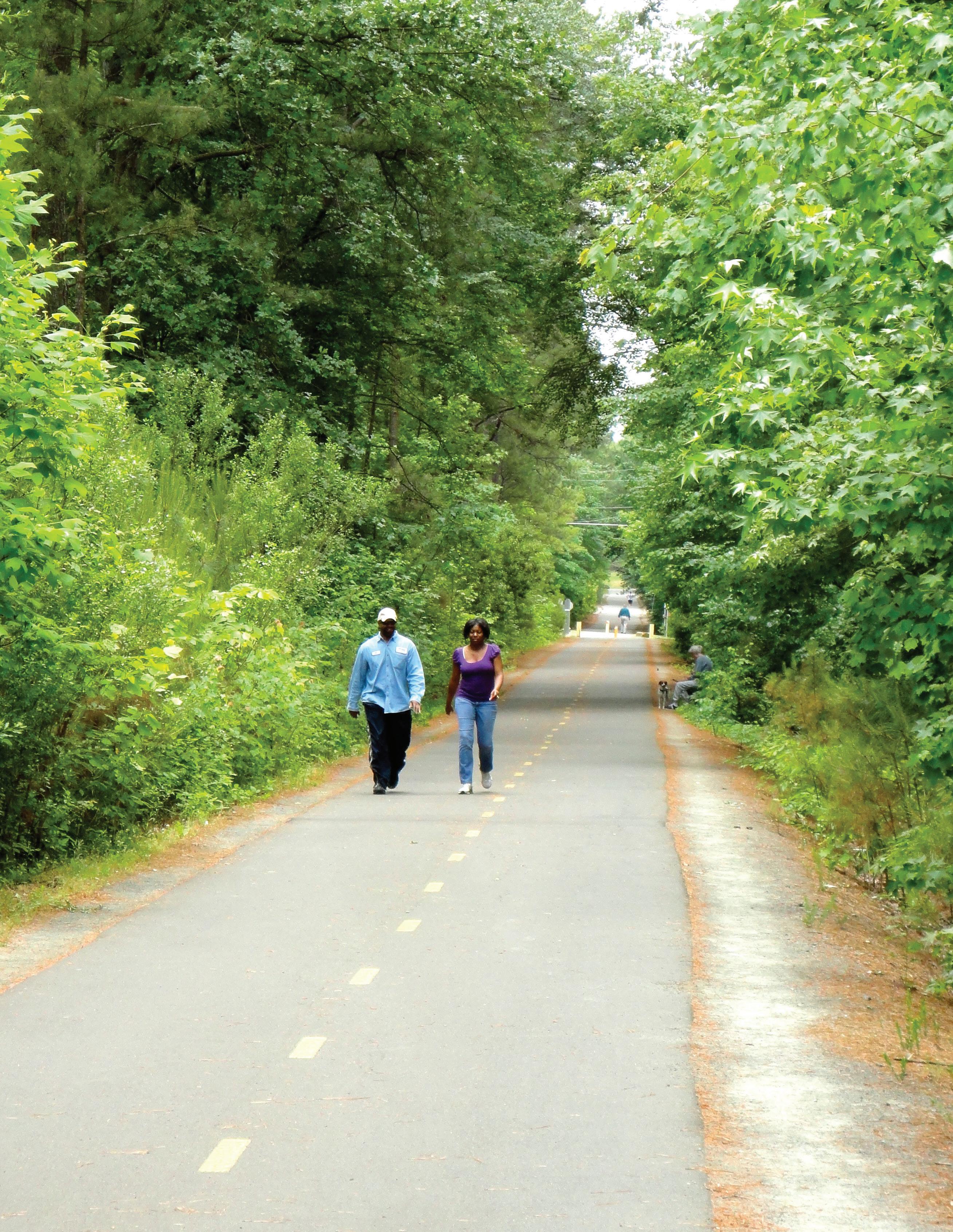
3 minute read
SOURCES
29 SOURCES
1 “Plants and Wildlife on the Francis Marion National Forest.” Accessed Sep. 11, 2015.<goo.gl/aFKsPO>
Advertisement
2 2009-2013 American Community Survey. US Census Bureau.
3 Ibid.
4 “Current Bicycle Friendly Communities.” (2014). The League of American Bicyclists. <http://bikeleague.org/sites/default/files/BFC_ MasterList_2014.pdf>
5 “Full List of Walk Friendly Communities.” (2015). U.S. Department of Transportation (FHWA), UNC Highway Safety Research Center, and FedEx. <http://www.walkfriendly.org/communities/list.cfm>
6 “Current Bicycle Friendly Communities.” (2014). The League of American Bicyclists. <http://bikeleague.org/sites/default/files/BFC_ MasterList_2014.pdf>
7 2009-2013 American Community Survey. US Census Bureau.
8 Ibid.
9 Ibid.
10 “Physical Activity in South Carolina.” (1999). South Carolina Department of Health and Environmental Control. <http://www.sph.sc.edu/prevent/pareport/BROCH.PDF>
11 Poursafa, P. and Dr. R. Kelishadi. “What health professionals should know about the health effects of air pollution and climate change on children and pregnant mothers.” (2011) Iran J Nurs Midwifery Res. 16(3): 257-264.
12 “2002 Rankings: Major Chemical Releases or Waste Generation in Charleston County.” (2002). Scorecard. <http://scorecard.goodguide. com/env-releases/county.tcl?fips_county_code=45019>
13 ”Kentucky, Ohio, Pennsylvania Have Worst Toxic Air Pollution from Power Plants.” (2012). Natural Resources Defense Council. <http://www.nrdc.org/media/2012/120809.asp>
14 “Benefits of Greenways: A Pennsylvania Study.” (2002). Pennsylvania Greenways Partnership Commission. <http://atfiles.org/files/pdf/BenefitsPA2002.pdf>
15 “The Environmental Benefits of Bicycling and Walking.” (1993). Federal Highway Administration. <http://safety.fhwa.dot.gov/ped_bike/docs/case15.pdf>
16 Yaffe, K., et al. “More Physical Activity Leads to Less Cognitive Decline.” (2001). Archives of Internal Medicine. <http://www.americantrails.org/resources/benefits/VAcognitive.html>
17 “A Step in the Right Direction.” American Hiking Society. <http://atfiles.org/files/pdf/AHShealthben.pdf>
18 Hendrick, B. “Southern States Make Up Much of ‘Diabetes Belt’.” (2011). WebMD Health News. <http://www.webmd.com/diabetes/ news/20110307/southern-states-make-up-much-of-diabetes-belt>
19 “Diabetes in Charleston County.” (2012). South Carolina Department of Health and Environmental Control. <https://www.scdhec.gov/Health/docs/Epi/diabetes/Charleston.pdf>
20 “A Step in the Right Direction.” American Hiking Society. <http://atfiles.org/files/pdf/AHShealthben.pdf>
21 “County Health Rankings & Roadmaps.” (2015). University of Wisconsin Population Health Institute, Robert Wood Johnson Foundation. <http://www.countyhealthrankings.org/app/southcarolina/2015/rankings/charleston/county/outcomes/overall/ snapshot>
22 Ibid.
23 “All Determinants.” (2014). America’s Health Rankings. <http://www.americashealthrankings.org/ALL/Determinants>
24 “Charleston County, South Carolina.” (2015). County Health Calculator. <http://countyhealthcalculator.org/location/145019/#64>
25 “Cost Barrier to Care.” (2015). U.S. Department for Health and Human Services. <http://wwwn.cdc.gov/CommunityHealth/profile/ currentprofile/SC/Charleston/10019> 26 “Charleston-North Charleston-Summerville, South Carolina.” (2011). “U.S. Department of Housing and Urban Development. <http://www.huduser.org/publications/pdf/Charleston_Comp.pdf>
27 Racca, D. and A. Dhanju. “Property Value/Desirability Effects of Bike Paths Adjacent to Residential Areas.” (2006). Delaware Center for Transportation, The State of Delaware Department of Transportation. <https://www.railstotrails.org/resourcehandler. ashx?id=4482>
28 Webel, S. “Trail Effects on Neighborhoods: Home Value, Safety, Quality of Life.” National Trails Training Partnership. <http://www. americantrails.org/resources/adjacent/sumadjacent.html>
29 “Economic Values of Greenways, Trails, and River Protection.” National Trails Training Partnership. <http://www.americantrails.org/ resources/economics/NPSeconStudy.html>
30 “Office of Tourism Analysis Annual Report.” (2014-2015). College of Charleston. <http://sb.cofc.edu/centers/tourismanalysis/news/ Office%20of%20Tourism%20Analysis%20Annual%20Report%20 -%202014-2015.pdf
31 Ibid.
32 Ibid.
33 Ibid.
34 “Selected Kids Count Indicators for Charleston County, South Carolina.” (2013). Kids Count Data Center. <http://www.datacenter. kidscount.org/data/customreports/6317/any>
35 “South Carolina Transportation by the Numbers.” (2015). TRIP. <http://www.tripnet.org/docs/SC_Transportation_by_the_Numbers_ TRIP_Report_Jan_2015.pdf>
36 “2010 South Carolina Injury County Profile.” (2010). South Carolina Department of Health and Environmental Control. <https://www.scdhec.gov/library/CR-010454.pdf>
37 “Complete Charleston County, SC accident report and news.” (2015). Accident Data Center. <http://accidentdatacenter.com/us/ south-carolina/charleston-sc/charleston-county-sc>
38 “Pedestrians Dying at Disproportionate Rates in America’s Poorer Neighborhoods.” (2014). Governing. <http://www.governing.com/ topics/public-justice-safety/gov-pedestrian-deaths-analysis.html>
39 Litman, T. “Evaluating Public Transit Benefits and Costs.” (2015). Victoria Transport Policy Institute. <http://www.vtpi.org/tranben.pdf>
40 Ibid.
41 “South Carolina Recreation Participation and Preference Study.” (2005). South Carolina Department of Parks, Recreation and Tourism. <https://www.scprt.com/files/RPE/2005%20Rec%20Study. pdf>
42 Quick, D. “Winter’s bike, pedestrian fatalities underscore importance of infrastructure, safety and awareness.” (2015). The Post and Courier. <goo.gl/veyFKA>
43 “2015 County Health Rankings.” (2015). County Health Rankings & Roadmaps. <http://www.countyhealthrankings.org/sites/default/files/ state/downloads/CHR2015_SC_0.pdf>
44 Mohn, T. “Pedaling to Prosperity: Biking Saves U.S. Riders Billions a Year.” (2012). Forbes. <goo.gl/YX2r1R>
45 Ibid.
46 “Motor Vehicle Deaths.” (2015). U.S. Department of Health and Human Services. <http://wwwn.cdc.gov/CommunityHealth/profile/ currentprofile/SC/Charleston/1076>
47 Wren, D. “Road woes: Growing congestion threatens to choke Charleston port traffic, commerce.” (2015). The Post and Courier. <goo.gl/dfwXoK>
48 Cohen, T. “Population Trends in Incorporated Places: 2000 to 2013.” (2015). U.S. Census Bureau. <https://www.census.gov/content/dam/ Census/library/publications/2015/demo/p25-1142.pdf>
49 Muir, J. “Yosemite.” (1912).
50 “Comprehensive Greenbelt Plan.” (2006). Charleston County Greenbelt Program. <http://charlestoncountygreenbelt.org/cgp.php>
THIS STUDY FUNDED BY:
OTHER PARTNERS FOR THE EAST COOPER TRAIL INCLUDE:


